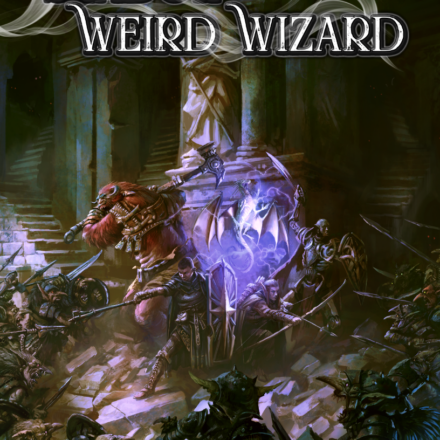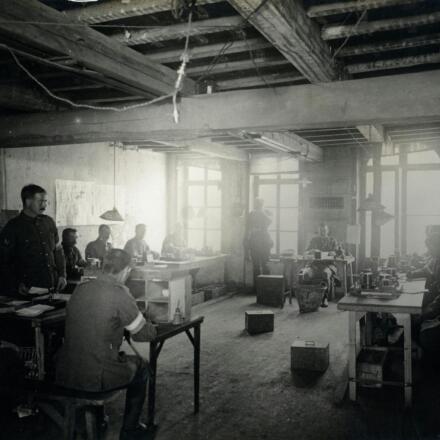I love to GM mysteries and conspiracies. I have been running them for years, ever since I picked up the first edition of Conspiracy X in 1996. Players do not always enjoy these types of adventures, often finding them frustrating and confusing. The most common reason for this is because they lose track of the clues, and thus cannot reach the necessary conclusions to solve the mystery or uncover the conspiracy. Over the years I have tried a few things to help with this. Today I am going to talk about one of my favorite techniques, the clue map.
Connecting The Dots
The key to running mysteries and conspiracies (I am going to use these terms interchangeably now), is to figure out what happened first and then create a trail of clues (with the occasional red herring) which lead back to the event. During play your players will uncover different clues. Some clues may lead to other clues and some may be information that will be required to solve the mystery. If you need help in this area, watch the first 30 min of every Law & Order episode.
The problem players have with conspiracies is that they lose track of some of the clues, or they forget the relationship of a clue to the overall mystery. When this happens the players can forget to follow a key clue to gain more information, or they try to solve the mystery without one of the clues they found. Often confusion sets in, wild guesses start flying, or bored players begin to rock the boat with outlandish ideas.
My favorite technique for managing clues is to use a clue map. The map is a drawing that has the collected clues on it, with arrows that link clues to one another. The map starts with little information, and as elements are revealed they are added to the map and their relationships are created.
The map does two things. The first is that it contains an inventory of all clues. This allows the players to see everything they have as they are working the case. The second is that the map shows how clues relate to each other, showing if a clue has been followed to its conclusion or still needs investigating. This allows the players to make sure they have pursued every clue to their conclusion.
Clue Map Example
In this example the players are detectives who are investigating a murder in a hotel room. Initially the map is simple, there is a hotel room and body.
After some investigating the players reveal three facts: the drivers license (and name) of the victim, some blood on the floor, and a fingerprint on the front door.
The investigators then do some research back at the lab and are able to find:Â a hit in the DNA database and run a background check on the victim. The fingerprint does not return a result.
From this point the players can take a survey of the crime. They know who’s DNA they have and can follow that lead. They know that at some point they have to match up the fingerprint to someone. They can also investigate the gang that the victim was a member of.
It’s Good For GM’s Too
As a tool for players, the clue map is a great way to keep track of the unfolding clues of a mystery. It is also a great way for a GM to build their conspiracy during their prep.
You can build the map either starting from the conclusion and working out to the first clue, or from the first clue and leading to the conclusion. The technique helps to insure that there is a logical pattern of clues that will create the trail the players will follow.
Clue Map In Play
One of the best clue maps we had ever done was for an Eberron game that my friend Sargon ran. It was a complicated mystery that took several sessions to uncover. We wound up using a 4′ x 6′ dry erase board to keep track of all the clues. It was invaluable in keeping track of what to investigate next and what info we knew.
In my upcoming Corporation game one of my plot lines is a mystery, but the investigation is going to be broken up by various missions that the players are going to undertake for their Corporation (The Chris Carter method). Because of the length of time for the mystery, and the fact that one of my players is a remote player, we are going to use a Google Drawing (part of Docs suite) to house the map. The players will all have view and edit privileges to it so that they can update it during and between games.
One Clue At A Time
The clue map is a great way to help players keep track of a mystery, and a great tool for a GM in developing the path to solving it. The visual tool can help organize information as well as direct players where to go next.
Have you ever employed a clue map in any of your games? If so, how did it work out? If not, do you think that your players would find this technique useful?




















This is awesome, Phil! I may have the guts to run a mystery now. I got experience with my noir style game for moving pieces and more motivated actors in the game world. Now it may be time to start working on a game with a mystery.
You might check out The Alexandrian. Justin talks about using node maps for adventure design (linking locations as a graph, with clues at each location leading to other nodes), and in the advanced node design series talks about a ‘clue map’ much as you are describing that basically overlays the physical map.
I do something similar myself. I’ve written up the first part in my Campaign and Scenario Design series but haven’t gotten around to how the information (clue) map and physical (travel) map don’t really need to be related. It came up in conversation yesterday on google+, so I may do that article soon.
Hey.
First time ever that I’ve written a comment on this site, but I’ve read most of the GM articles. Anyway, to write a descent mystery, you should focus on three things: events, people (or groups) and items. This scenario writing technique is called »fish tank« and is based on relations and factions rather then places and clues.
Begin with the events. It can be between 1-3 events, depending on how complex the story should be.
Example: “The head of the church has been murdered.”
Now, write some people and (a few) items up to seven people and items all together.
You still don’t have a scenario. Don’t worry. You will create it now.
Draw lines between the events, people and items (I will call these “factions” for short). Draw the lines randomly. These are the relations between the factions. Write on the line what kind of relation it is.
Look at the relation map that you’ve created. Every faction should have at least two relations to another faction. The more relations, the more important that faction is to the scenario.
Now, start thinking of a storyline. Why has that event happened and what -will- happen? Think of a point on that storyline where the PC’s will enter. When you play this the scenario will go through two phases. Note that while they are going through the scenario, the storyline will change and factions will react to it to steer it back to the original line. Sometimes the factions will succeed, sometimes they don’t. So the storyline that you thought of will not happen. It’s just a base for improvising consequences.
Anyway, when you’re playing the scenario will have two phases.
PHASE ONE
Give out all the factions in the first scene. The player’s goal in the rest of the scenes is to find the relations between all the factions. When they done that, then they know what’s going on in the scenario.
PHASE TWO
The players know what’s wrong and why. Now it’s up to them to solve it.
—
I could write a full article about this, if you’re interested and not afraid of English with a Swedish accent. ^^ I can show a rather complex relationship map based on three events. Just ignore the writings: http://urverkspel.com/images/stories/matine/exempelscenario_relationer.gif
It takes 45-60 minutes for me to do this kind of relationship map.
@Rickard Elimää – If you’d like to drop me a line at martin gnomestew com, I’d love to see a pitch for that as a guest article. It sounds like a really useful technique.
How has no one mentioned the GUMSHOE system or any of the games that use it (Trail of Cthulhu, Night’s Black Agents, Mutant City Blues, Esoterrorists, etc.) in this discussion yet?
@ Jeremy: I’m with you. I’m a huge fan of the idea of the core clue in gumshoe games. I don’t always like its implementation but just the idea of the investigators will find this clue as long as they ask for it or make some attempt to find it. I also really dig the idea of here’s the clue now you figure out what it means. This may take you to some odd places or even give you some unexpected results from your players but I’m firmly in the camp of mystery’s follow a trail of clues.
Now I don’t mind getting a little crazy with my clues and how they interrelate. I don’t always just want one trail so I can see where the clue map is really useful. I actually have been using it in some of my recent Realm of Cthulhu writing along with the core clue concept.